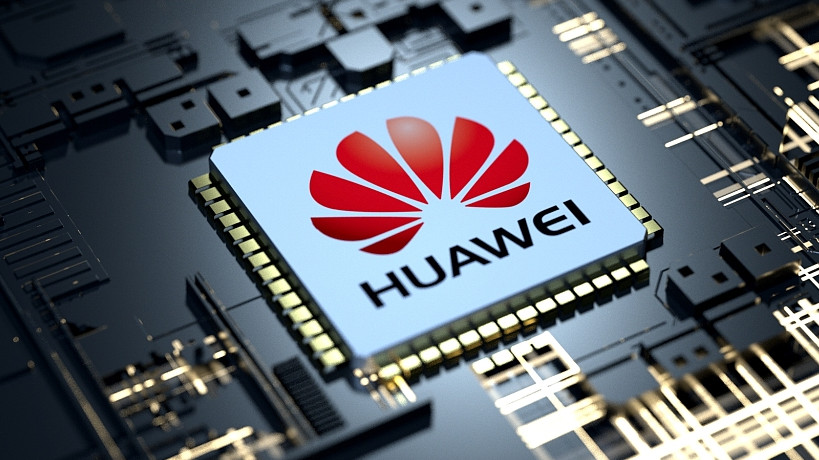A Surprising Discovery
In a groundbreaking revelation that has sent ripples through the semiconductor industry, a Canadian research firm recently uncovered that Huawei Technologies’ Ascend 910B—a sophisticated artificial intelligence (AI) processor—contains semiconductor dies produced by Taiwan Semiconductor Manufacturing Company (TSMC). This unexpected finding not only raises eyebrows but also highlights potential loopholes in the US sanctions imposed on Chinese technology firms, as well as China’s relentless pursuit of advanced technology. The incident showcases the complexities of global supply chains and the challenges of enforcing stringent export controls in an increasingly interconnected world.
Here's ads banner inside a post

The Context of US Sanctions
The US government has implemented a series of stringent sanctions against Chinese technology firms, particularly targeting Huawei, with the aim of curbing its access to advanced semiconductor manufacturing capabilities. These sanctions have taken various forms, including restrictions on the sale of certain technologies and components to Huawei, particularly those deemed critical for national security. Since September 2020, TSMC has publicly stated that it has not supplied chips to Huawei, following the amendments made by the US Department of Commerce to its foreign direct product rule aimed specifically at Huawei.

Here's ads banner inside a post
Despite these restrictions, the recent discovery of TSMC dies in Huawei’s Ascend 910B raises significant questions regarding the effectiveness of US export controls. Arisa Liu, a research fellow and director at the Taiwan Institute of Economic Research, aptly summarized the situation, stating, “US long-arm sanctions on China’s semiconductor sector have proven to be porous.” This observation underscores the inherent difficulties in enforcing regulations in an industry characterized by complex and global supply chains, where components can change hands multiple times before reaching their final destination.
A Scramble for Explanations
In the aftermath of this shocking revelation, TSMC moved swiftly to halt shipments to an unnamed customer after suspecting that one of its chips had inadvertently ended up in a Huawei product. The chipmaker promptly notified both the US government and Taiwanese authorities, flagging the situation as a potential breach of export controls. This incident has sparked a frenzy of speculation among analysts and industry insiders regarding the specifics of the supply chain involved.

Here's ads banner inside a post
Key questions remain unanswered: Who is the unnamed customer, and what is their relationship with Huawei? Did Huawei directly source TSMC’s technology, or did it access these chips through intermediaries or indirect channels? The ambiguity surrounding the details of this incident highlights the broader challenges associated with tracing the flow of components in the semiconductor supply chain.
Industry insiders emphasize the importance of transparency in the semiconductor sector, particularly in light of regulatory pressures and geopolitical tensions. The lack of clarity regarding the customer’s cooperation with TSMC not only fuels speculation but also raises concerns about the potential ramifications for both companies involved.

The Rise of Huawei’s Ascend Chips
Huawei’s Ascend chips have quickly evolved to become a cornerstone of China’s AI-focused semiconductor ecosystem. The original Ascend 910 chip was launched in 2019, just months after Huawei was placed on the US trade blacklist. Despite the significant challenges posed by these sanctions, Huawei has managed to innovate and position the Ascend chips as viable alternatives to more established products in the market.

The Ascend 910B, which mysteriously appeared on the market in 2023, is touted as having capabilities comparable to Nvidia’s A100—one of the most popular GPUs in the AI industry. A Huawei executive claimed at a recent technology forum that the performance of the 910B is on par with Nvidia’s flagship chip, suggesting that the competition between these two tech giants is intensifying.

However, the circumstances surrounding the release of the 910B remain shrouded in secrecy. Key information about its production scale, manufacturing partners, and technological specifications has not been disclosed, raising questions about the viability of Huawei’s claims. Industry sources have indicated that Huawei is now testing its third-generation 910C chip with select customers, further complicating the narrative surrounding its semiconductor capabilities.
The Challenge of Advanced Semiconductor Manufacturing
While Huawei’s advancements in AI technology are commendable, the revelation of TSMC dies in the Ascend 910B serves as a stark reminder of the broader challenges that China faces in achieving self-sufficiency in semiconductor manufacturing. Despite significant investments in domestic chip manufacturing capabilities, industry insiders point out that China continues to rely heavily on foreign technology and equipment. For example, advanced lithography machines from suppliers like ASML remain essential for producing cutting-edge chips, and China has yet to develop an equivalent domestic alternative.

Last year, Huawei made headlines with the launch of its Mate 60 Pro smartphone, powered by a 7-nanometer chip. Initially, the success of this device was attributed to a surge in patriotic consumer sentiment, which significantly boosted sales. However, subsequent investigations revealed that the chip was manufactured by Semiconductor Manufacturing International Corporation (SMIC), raising concerns about the sustainability of Huawei’s supply chain amidst ongoing sanctions.

The incident surrounding the Ascend 910B chips serves as a critical case study, illustrating the difficulty of achieving technological independence in an industry that is increasingly reliant on global collaboration and supply chain integration. As geopolitical tensions mount, the question remains: how can China navigate these challenges while advancing its semiconductor ambitions?
A Strategic Response from the Semiconductor Industry
In response to the incident involving TSMC and Huawei, semiconductor manufacturers are reassessing their supply chains and relationships with clients. The semiconductor sector, known for its intricate and often opaque supply chains, must navigate a landscape fraught with regulatory hurdles and geopolitical complexities. TSMC’s swift action to notify authorities highlights the importance of compliance in an industry where violations can lead to severe repercussions.

As analysts dissect the implications of TSMC’s involvement with Huawei, industry insiders speculate whether this incident will prompt stricter enforcement of US sanctions or lead to a reconsideration of existing policies. The evolving dynamics between US and Chinese technology firms will undoubtedly shape the future of the global semiconductor landscape, impacting everything from innovation to market competition.
The Road Ahead
The findings surrounding Huawei’s Ascend 910B and TSMC’s role present a multifaceted narrative of technological aspirations, regulatory challenges, and geopolitical rivalries. As the semiconductor industry continues to grapple with the ramifications of these developments, it is clear that the stakes are high.
The ongoing saga of Huawei’s efforts to compete in the global semiconductor market, despite significant sanctions and restrictions, reveals both the resilience of Chinese firms and the challenges they face. As the battle for semiconductor supremacy intensifies, the implications of this discovery will resonate far beyond the immediate circumstances, shaping the future of technology, international trade, and global economic dynamics for years to come.

In this era defined by rapid technological advancements and fierce competition, the story of Huawei’s Ascend 910B serves as a potent reminder of the delicate balance between innovation and regulation in the global tech landscape. As both companies navigate this high-stakes environment, the world will be watching closely to see how the interplay of sanctions, supply chains, and technological prowess unfolds in the coming years.

